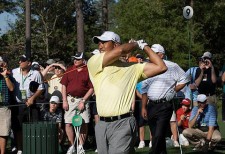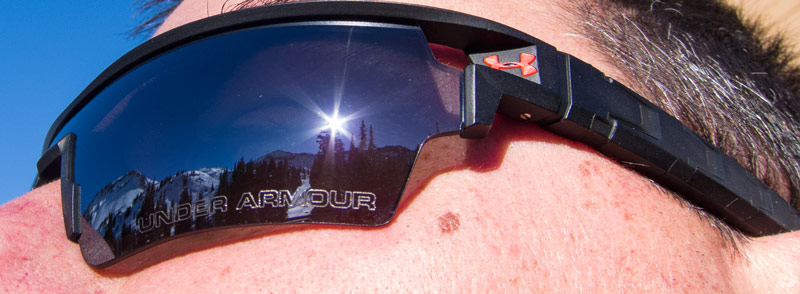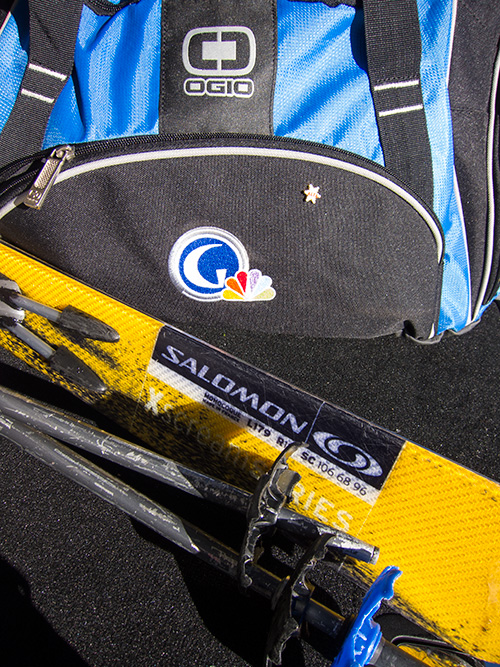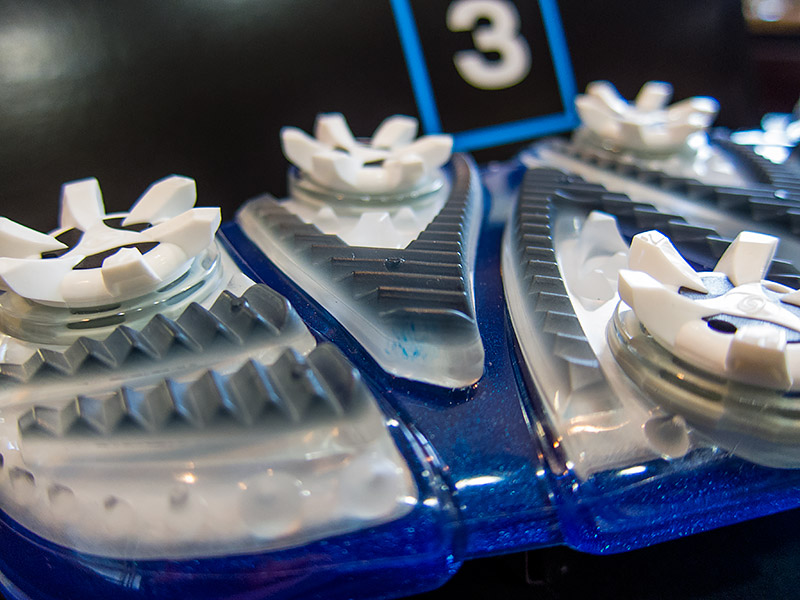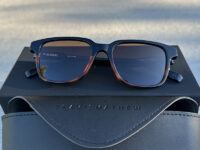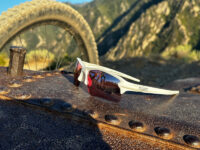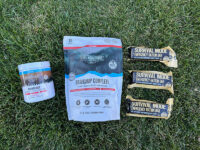Tiger Woods Turns 38
Categories: PGA Tour • Pro Golf • Tiger Woods
Tags: Tiger Woods
Today is Tiger Woods’s 38th birthday. Love him or hate him, you can’t deny his impact on the golf world.
Let’s just hope that today’s birthday isn’t an excuse for the golf media to break out the “will Tiger break Jack Nicklaus’s major championship record?” articles again! Please…
State of the Game: Golf Through Arnie’s Eyes
Categories: (British) Open Championship • Champions Tour • Miscellaneous • PGA Championship • PGA Tour • Pro Golf
Tags: Arnold Palmer • Golf Channel
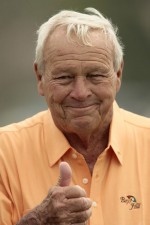 Through Golf Channel, the King Arnold Palmer has published his 2013 State of the game:
Through Golf Channel, the King Arnold Palmer has published his 2013 State of the game:
STATE OF THE GAME: GOLF THROUGH ARNIE’S EYES
By Arnold Palmer
Published December 29, 2013
This is the season of nostalgia. As one year of memories gets packed away, another filled with opportunity beckons. Before we jump headlong into 2014, I’d like to take a few minutes and remember some of the good people we lost in 2014.
My formative experience with losing a loved one came in 1950. I was a senior at Wake Forest when my roommate, Bud Worsham, was killed in an automobile accident. Bud was my best friend; in fact, he was the reason I had attended Wake Forest in the first place. What made his loss even harder to handle was the fact that I might very well have been in that car that night had I not opted to skip a Homecoming dance and instead attend a movie.
I bring that up because there’s not a day that goes by that I don’t think of Bud Worsham. There’s not a facet of my life that hasn’t been improved for knowing him, albeit so briefly. I’ve lost many loved ones over the years: my father in 1976, my mother in 1979 and of course, my wife Winnie in 1999. But Bud’s death taught me the lesson—wrenching as it was—that death is a part of life, and that the memories are worth the pain. I celebrate that lesson in remembering these departed friends.
Miller Barber: If all you knew about Miller Barber was his golf swing, you’d say he had no shot. He had the ultimate chicken-wing right arm and held the club virtually perpendicular to the ground at the top of his backswing. But what people overlooked with Miller—as they do with most good players with unorthodox swings—was that he had a great release through the ball. And while he may not have been the most athletic looking player, Miller was very strong and very powerful.
He also enjoyed a pretty colorful nightlife, though one that was opaque to the rest of us. In those seemingly simpler days, groups of us would often get together and frequent the same bars or restaurants, but Miller never told us where he was going that night or where he’d been the night before. As a result, our PGA Tour colleague Jim Ferree dubbed Barber “The Mysterious Mr. X.” Over time the moniker was reduced simply to X. Up until the last time I saw him, I still called him X, not Miller. He had a great sense of humor and took to the nickname. But he also remained the man of mystery and a very close friend.
Bill Campbell: Bill was not only one of the great gentlemen of the game, he was one of the great gentlemen, period. Sandy Tatum, the high priest of American amateur golf, once said that “in the whole history of golf there have been just two ultimate quintessential golfers: Bill Campbell and Bobby Jones.”
Like Jones, even though he lived a full life off the course, Bill regularly competed against the best players in the world. Although he and I were never paired together in a major championship, we did compete in 1965 when Jack Nicklaus, Gary Player and I took on three outstanding amateurs in Bill, Deane Beman and Dale Morey. I wasn’t playing my best, and as we were walking down the fairway I was trying to keep a positive outlook. I said to Bill, “My father always said to me, ‘He can who thinks he can.’ Bill, do you believe you can force yourself to do things?”
Bill said, “Well, Arnold, I can’t argue with that. You’re pretty strong evidence of it.”
Perhaps the story that best illustrates Bill’s exalted place in the game came from Jack Nicklaus. Years ago Jack had been debating the finer points of amateur status with Frank Hannigan, the former executive director of the USGA. Jack said to Frank, “Name one top amateur who doesn’t take anything from the manufacturers.’
“Bill Campbell,” replied Hannigan. Jack paused for a moment. “Okay. You can have Campbell,” he said. “Name another one.”
Frank Stranahan: Stranny, who passed away in June, is one of the most overlooked talents in the history of the game. This guy was sensational. He pretty much won everything there was to win as an amateur, including three North and Souths, three Western Ams, two Canadian Ams and two British Ams. The only important amateur trophy that eluded him was the U.S. Amateur, in which he finished runner-up in 1950.
Given that he came from a wealthy family (his father founded Champion spark plugs), many of us expected Frank to remain a lifelong amateur, but he turned pro and won six times on the PGA Tour before leaving competitive golf in the mid-1960s to focus on business. “Muss”, as we also called him because of his fastidious appearance, had the complete package: a terrific game, dazzling good looks and lots of money. People credit Gary Player with bringing fitness to the game of golf, but Stranny, who used to travel with barbells in his suitcase, was a devoted fitness buff and health nut. He ran dozens of marathons, and competed in bodybuilding and weightlifting well into his 70s.
One last note about Frank. I am often given credit for “salvaging” the British Open in the early 1960s. We can argue whether or not the game’s most historic championship really was in danger of sinking, but it is safe to say that after World War II, many American competitors simply found it easy and more profitable to compete here in the United States. Frank never quit on the Open. He continued to compete there on a regular basis, and finished second in 1947 and 1953. His devotion to the Open Championship is what inspired me to go over in 1960. I won the following year, and I’ve been credited ever since with “saving” the Open, but it was Frank who paved the way.
Pat Summerall: His Fox Sports colleague John Madden put it best when he said of the millions of sports fans who embraced Pat Summerall’s mellow brand of broadcasting, “They invited a gentleman into their homes.”
Whether it was football or golf, Pat became as much a part of the fabric of American sports as the leather on the arms of our easy chairs. I thought it was a beautiful gesture when Augusta National Golf Club offered him membership upon his retirement from television. Though out of the spotlight, the final years of Pat’s life, when he reacquainted himself with the most important thing in anyone’s life, family, were some of the happiest he ever enjoyed.
Ken Venturi: Ken became well known to casual golf fans when he joined the television booth in the late 1960s, but he was a force in the game as early as the late 1940s. A student of Byron Nelson and frequent playing partner of Ben Hogan, Ken was a formidable talent whose career was both sparked and unraveled by physical ailments. He first took up golf as a 13-year-old in response to his teacher’s diagnosis of Ken as a “an incurable stammerer.” He took up the loneliest sport he knew.
His ironman performance in winning the 1964 U.S. Open while battling severe dehydration remains the hallmark by which on-course toughness is measured. But ultimately it was another physical challenge, carpal tunnel syndrome, that forced his early retirement in the late 1960s and encouraged his transition to the broadcast booth.
Ken and I will likely forever be linked by a rules decision invoked while playing in the final round of the 1958 Masters. On the 12th hole, I hit a 6-iron off the tee and my ball plugged into its own pitch mark on the back fringe of the green. The ground was wet and soft, and a local rule providing relief from an embedded ball was in effect all week. I was leading by a shot, and just to be safe I called over the rules official, the late Arthur Lacey. I proposed that I could lift, clean and drop my ball without penalty to a spot as close as possible to the original position and no nearer the hole (a stance with which Ken agreed), but Lacey disagreed, saying I had to play the embedded ball. I knew I was right, but I wasn’t in much of a position to argue. Finally, I said, “I’m going to play two balls and appeal to the tournament committee.” I knew I had that option under Rule 3-3a.
Lacey objected, saying, “No sir, you cannot do that either.” I told him, “Well, that’s exactly what I’m doing.” I played the original ball as it lay for a 5 and then announced that I was about to play a second ball. I dropped to a clean lie and made par. Ken objected, saying that I was required to announce to him that I was going to play two balls before I played the original. The officials on site at the Masters reviewed the case, agreed with me, and I won my first Masters by a shot.
That incident affected our relationship. We both wrote about it in subsequent books, each of us insisting that we were right. I think the whole episode says more about the confusion built into the Rules of Golf than it does about me or Ken. I regret that the incident affected our relationship. Ken was a remarkable human being, and a warm and true friend to thousands of people in and out of the game.
Under Armour Phenom Sunglasses Review
Categories: Golf Accessories • Golf Gear • Reviews
Tags: Designer Sunglasses • Sunglasses • Under Armour
I’ve had the pleasure of reviewing a few pairs of Under Armour sunglasses. Yes, sunglasses. Under Armour is well known for their killer athletic apparel. Does their eyewear live up to those high standards as well?
Under Armour Phenom Sunglasses
Today’s review is the UA Phenom model sunglasses. This are very stylish shades which cover a larger area around the eyes. My review spans two sports: golfing and skiing.
Overview
The Phenom model sunglasses have a very flexible frame made from a combination of titanium and “grimalid.” The flexibility of the frame allows it to fit many different size and shape heads. Despite being so flexible, the glasses stay firmly in place.
The patented ArmourSight lenses deliver 20% more peripheral vision without distortion than regular glasses while being 10x as strong. The lenses, most importantly, block 100% of harmful UVA, UVB and UVC rays.
This is a great feature for golfers who like to take their shades off to putt. The cap gripper ensures a secure fit when worn upside down!
Colors
There are two models available of this roughly $150 pair of shades, black and white. The black has black lenses (pictured) and the white has the orange/mirror lenses.
On The Golf Course
The details and colors I see on the course with the UA Phenoms is, well, PHENOMenal. Reading greens and course contours is wonderful.
The stability of the shades is fantastic, especially during my spastic golf swing. There is no movement or slippage at all, ever.
The wide coverage and super wide peripheral vision make it seem as if I’m wearing no glasses at all.
On The Ski Slopes
Many of the advantages the golfer enjoys with the Phenoms cross over into skiing. It is important for the slopes and contours of the mountain be easily visible. There’s nothing worse than hitting bumps and holes which one can’t see because the glasses produce too flat of a picture. The Phenoms deliver great clarity and detail on the slopes.
The same stability and non-slip feature which is great for the golf swing is fantastic for skiing. Even through heavy moguls (bumps), jumps and even a crash or two, the Phenoms hold their position.
As with golf, the wide viewing area and fantastic peripheral vision are a great benefit on the slopes.
Conclusion
For a pair of sunglasses to make it into my golf gamer bag or into my ski accessory bag, they must meet these three criteria: performance, comfort, style (don’t need to be Tom Ford Sunglasses though). The Under Armour Phenom sunglasses are phenomenal in all three categories.
Related Links
Under Armour Mahan Sunglasses Review
Under Armour Nitro Sunglasses Review
Golf Channel Ski Bag
Categories: Golf Accessories • Golf Gear
Tags: Golf Channel
I’m probably the only one who has a Golf Channel ski bag…
I keep my ski goggles, gloves, hat, scarf, ski boots, GoPro and all my other golf accessories in there.
Great bag by OGIO. Glad it has the old logo and not the new one.
Photos: FootJoy Mystery Box #3
Categories: Golf Apparel • Golf Gear
Tags: FootJoy • Golf Apparel
This is fun. FootJoy has been sending weekly “mystery boxes” which contain very interesting clues to a new technological innovation. It’s quite obvious at this point, if it was not already, that this innovation is in the world of golf shoes.
Today’s more obvious mystery item is the sole of a new golf shoe which features a “NitroThin TPU Outsole.” That was going to be my first guess.
This thermoplastic urethane outsole has been in development for several years.
Below my son Seve is helping me with the analysis of this NitroThin TUP thermoplastic urethane outsole.
Master Seve wisely pointed out that urethane is also the same material found in the covers of premium “tour” caliber golf balls like the Titleist ProV1.
Nice call Seve. Nice call.
Related Articles
« Previous 1 … 288 289 290 291 292 … 1,165 Next »

